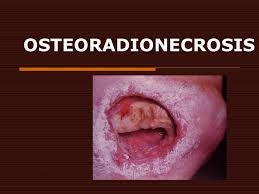
How does Hyperbaric Oxygen Therapy help with Osteoradionecrosis – “delayed radiation damage”?
Osteoradionecrosis
Osteoradionecrosis (ORN) is bone that has died as a complication of radiation therapy. It occurs because radiation inevitably destroys normal cells and blood vessels, as well as tumor cells. Damage to the small arteries reduces circulation to the area, depriving it of oxygen and other necessary nutrients. This process is gradual and may take many months or years to appear.
If you require surgery to the affected area, the wound may not heal. Oxygen delivered at hyperbaric pressures has been shown to produce new blood vessels in the irradiated area and stimulate wound healing. This results in a long-term improvement in the quality of the tissue.
Hyperbaric oxygen is given to radiation patients to prevent osteoradionecrosis (ORN) following dental extraction: Studies show that the chance of getting ORN is reduced from 28 percent to 5 percent with hyperbaric oxygen treatment. Hyperbaric oxygen is also given to repair damage from established osteoradionecrosis: Improvement is documented in 83 percent of cases treated with hyperbaric oxygen.
If you had radiation to the head and neck region, you may be experiencing a reduction in saliva. This may affect your speech and swallowing. Some hyperbaric patients have found that salivation has improved during their course of treatment.
Hyperbaric oxygen Therapy (HBOT) is widely accepted as an effective treatment for delayed radiation injuries. HBOT benefits include the following:
- Increasing oxygen promotes tiny new blood vessels to grow inside and around the radiation site. As you grow more blood vessels, more oxygen rich blood can reach the affected area.
- Decreasing swelling (edema) around the radiation site. Decreasing the swelling allows the blood to flow more freely to the area, bringing with it oxygen.
- High oxygen levels increase the ability of the ‘infection fighting’ cells (white blood cells) to kill bacteria.